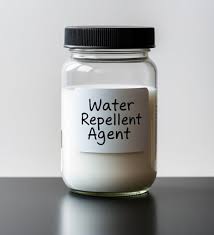Description
Staying Dry: A Deep Dive into Water Repellent Agents
In a world increasingly impacted by unpredictable weather, the demand for materials that can repel water is greater than ever. From the jackets we wear to the buildings we inhabit, water repellent agents play a crucial role in protecting us from the elements, extending the lifespan of our belongings, and even improving the performance of certain technologies. But what exactly are water repellent agents, how do they work, and what are the different types available? Let’s dive in.
What are Water Repellent Agents?
At their core, water repellent agents are substances designed to make a surface hydrophobic, meaning water is actively repelled. These agents create a barrier that prevents water from soaking into the material, causing it to bead up and roll off instead. This simple act has profound consequences, impacting everything from comfort and hygiene to durability and structural integrity.
The Science Behind the Repulsion:
The mechanism behind water repellency lies in surface chemistry. Generally, water molecules are attracted to each other (cohesion) and to other polar surfaces (adhesion). Water repellent agents, however, interrupt this attraction. They typically work by:
- Lowering Surface Energy: These agents create a non-polar coating on the material, reducing its surface energy. Water, being a polar molecule, prefers to interact with other polar molecules and will minimize its contact with the low-energy, non-polar surface created by the repellent.
- Creating a Rough Surface: A rough surface with micro or nano-sized features increases the contact angle between the water droplet and the material. The larger the contact angle, the less contact area and the easier it is for the water to roll off. This principle is often seen in nature, like the self-cleaning abilities of lotus leaves.
Types of Water Repellent Agents:
The market offers a wide variety of water repellent agents, each with its own advantages and disadvantages:
- Waxes: Historically, waxes like beeswax and paraffin were popular choices. They offer decent water repellency but are often not very durable and can be easily washed off.
- Oils and Greases: Similar to waxes, oils and greases provide a barrier against water penetration but tend to attract dirt and can leave a greasy residue.
- Silicones: Silicone-based repellents are widely used due to their good water repellency, durability, and resistance to temperature changes. They are commonly found in textiles, paints, and building materials.
- Fluoropolymers: Fluoropolymers, such as Teflon (PTFE), offer excellent water repellency and chemical resistance. They are often used in high-performance applications, like waterproof clothing and outdoor gear. However, some fluoropolymers have raised environmental concerns.
- Polyurethane (PU) Coatings: PU coatings can provide a waterproof or water-resistant layer on textiles and other materials. The level of repellency depends on the specific formulation and application.
- Nanomaterials: Emerging technologies utilize nanoparticles, like silica or zinc oxide, to create ultra-hydrophobic surfaces. These materials can offer exceptional water repellency and self-cleaning properties, but their long-term durability and environmental impact are still under investigation.
Applications Across Industries:
The versatility of water repellent agents makes them indispensable across a wide range of industries:
- Textiles: Waterproofing outerwear, tents, and umbrellas. Improving stain resistance in upholstery and carpets.
- Construction: Protecting building materials from water damage, preventing mildew and mold growth.
- Automotive: Enhancing the visibility of windshields and preventing water spots on paint.
- Electronics: Protecting electronic components from moisture damage.
- Medical: Creating water-resistant medical devices and personal protective equipment.
- Packaging: Protecting food and other products from moisture during transport and storage.
Choosing the Right Agent:
Selecting the appropriate water repellent agent depends on several factors, including:
- The material being treated: Different materials require different types of repellents for optimal performance and adhesion.
- The desired level of repellency: The intensity of water exposure the material will face dictates the necessary level of water resistance.
- Durability and longevity: Consider how long the repellent needs to last and how well it will withstand wear and tear.
- Environmental impact: Choose agents that are environmentally friendly and comply with relevant regulations.
- Cost-effectiveness: Balance performance with cost to find the most suitable solution for your needs.
Looking Ahead:
The future of water repellent agents is focused on developing more environmentally friendly and durable options. Research is exploring bio-based repellents derived from natural resources, as well as advanced nanomaterials that offer superior performance and self-healing capabilities. As technology continues to advance, we can expect to see even more innovative solutions that keep us dry and protected from the elements.
In conclusion, water repellent agents are essential tools for protecting materials and enhancing everyday life. Understanding their function, types, and applications allows us to make informed choices and harness their power to stay dry and comfortable in a world filled with unpredictable weather. As we strive for greater sustainability and performance, the evolution of water repellent technology will continue to shape the products we use and the way we interact with our environment.











Reviews
There are no reviews yet.